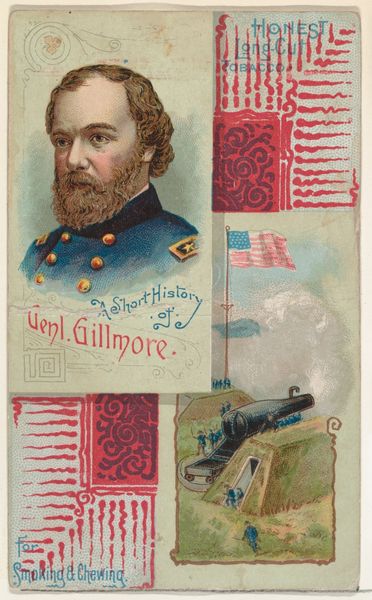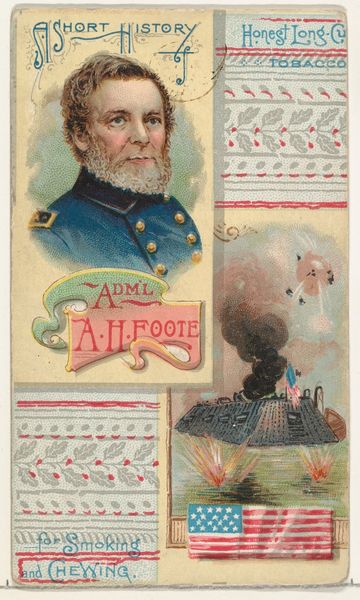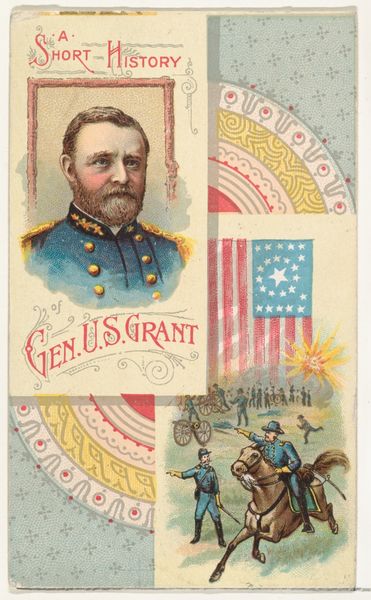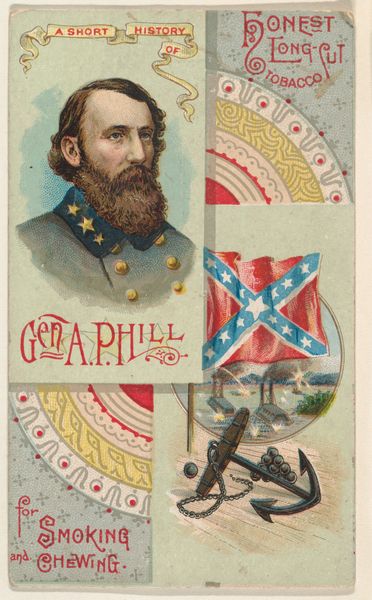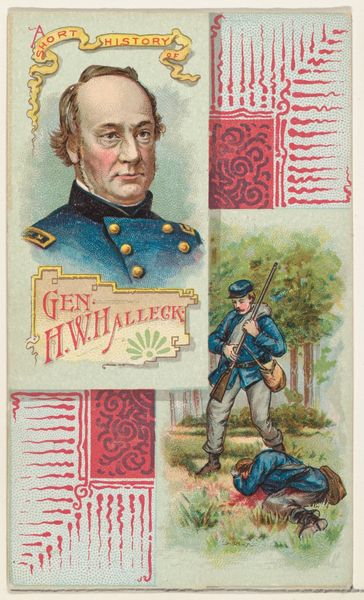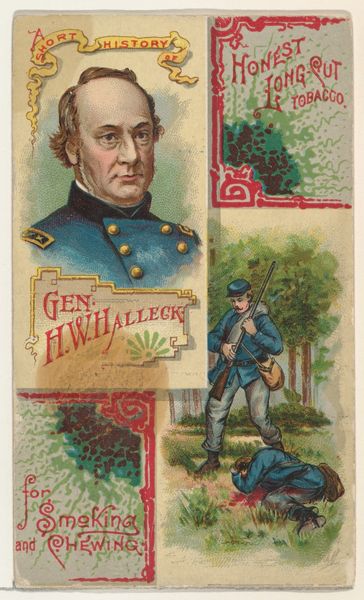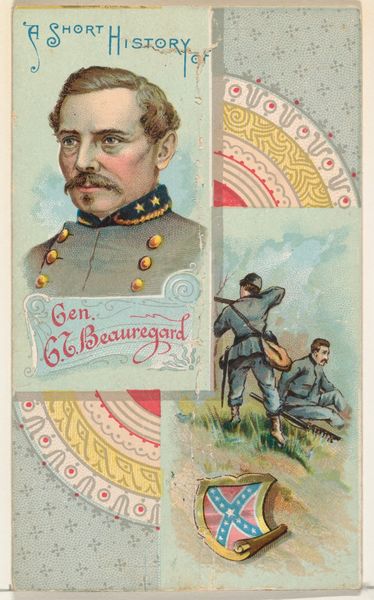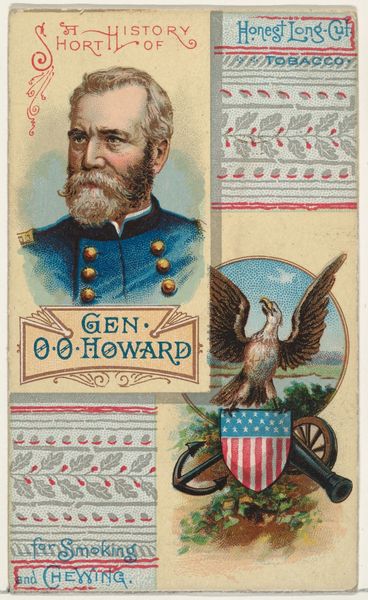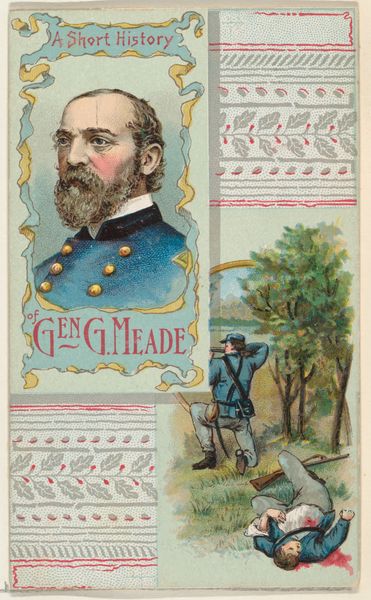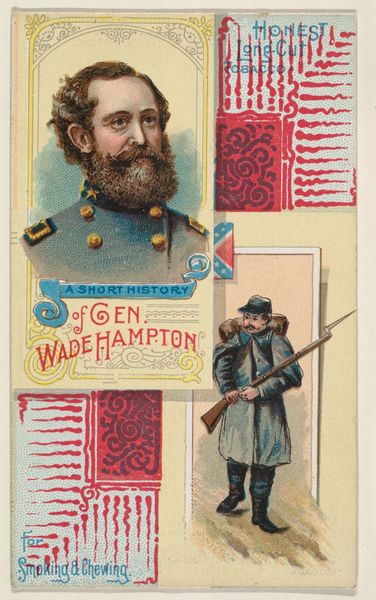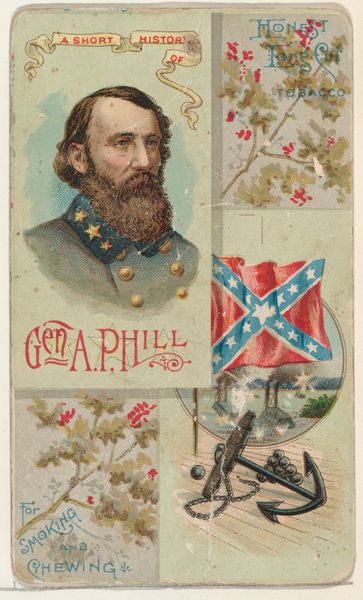
A Short History of General Gillmore, from the Histories of Generals series (N114) issued by W. Duke, Sons & Co. to promote Honest Long Cut Smoking and Chewing Tobacco 1888
0:00
0:00
drawing, painting, print, watercolor
#
portrait
#
drawing
#
water colours
#
painting
# print
#
watercolor
#
coloured pencil
#
men
#
genre-painting
#
history-painting
#
academic-art
Dimensions: Sheet: 4 3/16 × 2 1/2 in. (10.7 × 6.4 cm)
Copyright: Public Domain
Curator: Well, this piece, dating back to 1888, is one of a series of trade cards issued by W. Duke, Sons & Co. to promote their tobacco products. It’s called "A Short History of General Gillmore" and forms part of their 'Histories of Generals' collection. Editor: Wow, my first thought is it's quite busy for something designed to sell tobacco. The combination of the general's portrait with the little vignettes of his career and the decorative borders—it's a sensory overload! Curator: Exactly! These cards weren’t just advertisements; they were collectible items distributed in cigarette packs. They reflect a broader trend of using prominent figures and historical narratives to elevate brands and appeal to a sense of national pride and knowledge. Editor: I see that, especially with the miniature painting of the canon and the flag, but how much of this ‘history’ is romanticized puffery, so to speak, in line with, well, selling puffs of tobacco? Curator: A fair point. General Gillmore was a significant figure in the Civil War, known for his engineering skills, but these cards inevitably simplify history, focusing on heroic imagery and positive attributes to create a desirable association with the brand. The inclusion of genre and history painting adds an air of legitimacy and cultural value. Editor: Still, looking at the watercolor portrait itself, there’s a directness to it, despite the overall marketing gloss. There's a sense of how they wanted him to come off, stern but trustworthy and the rendering has an undeniable appeal, a hand-drawn quality that offsets some of the more overt salesmanship, to use a generous term. Curator: The artist likely used printmaking techniques based on watercolour, reflecting popular visual culture and how images circulated at the time, especially for widespread commercial use. What’s fascinating to me is how these seemingly ephemeral objects become valuable historical artifacts, offering insights into advertising strategies and societal values. Editor: And now, we scrutinize it, extracting meaning the original makers probably never intended. What a strange afterlife for a bit of capitalist fluff! Curator: Indeed! From fleeting promotion to historical document – a transformation emblematic of art’s complex relationship with commerce and culture.
Comments
No comments
Be the first to comment and join the conversation on the ultimate creative platform.
